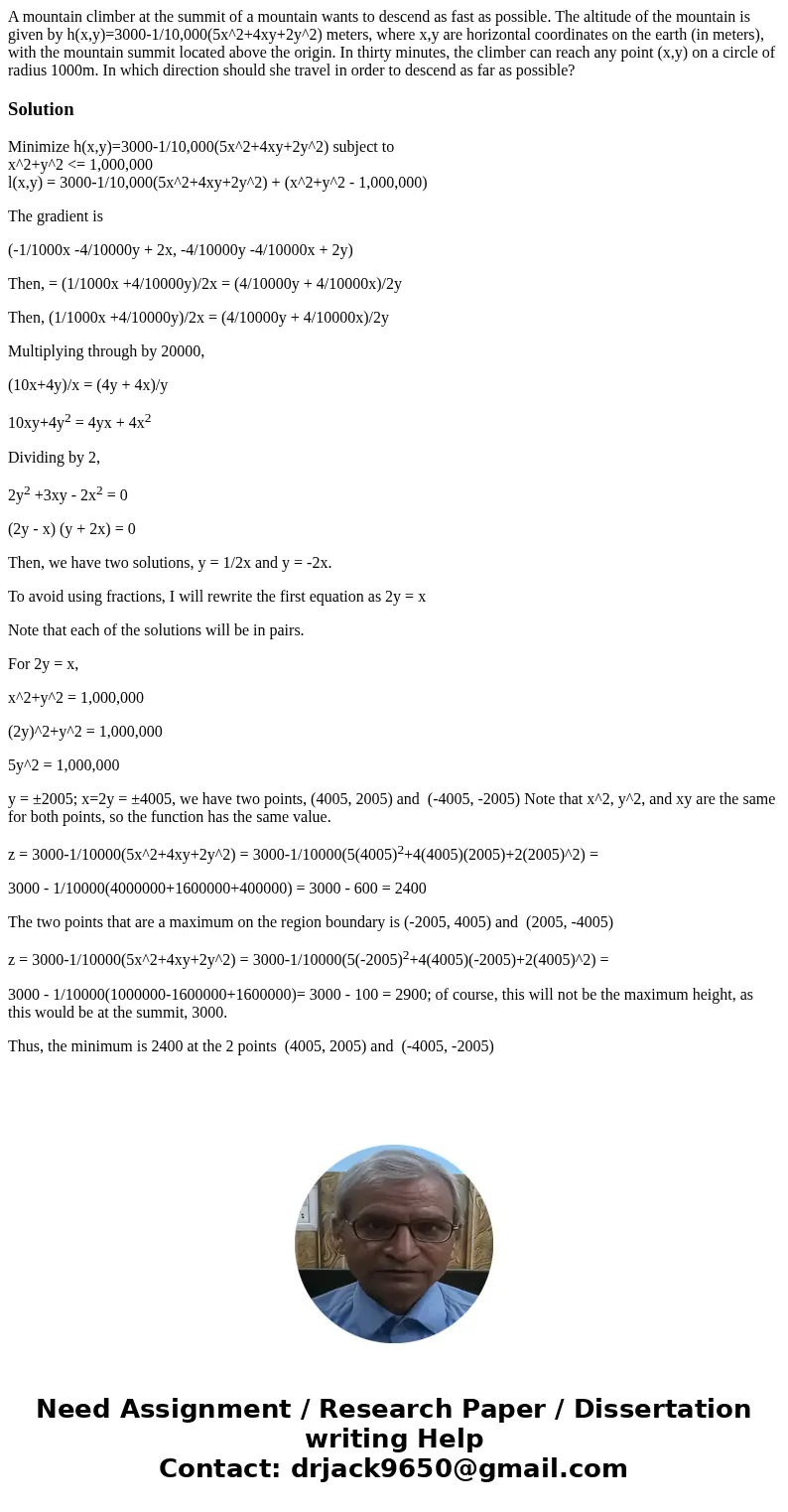A mountain climber at the summit of a mountain wants to desc
Solution
Minimize h(x,y)=3000-1/10,000(5x^2+4xy+2y^2) subject to
x^2+y^2 <= 1,000,000
l(x,y) = 3000-1/10,000(5x^2+4xy+2y^2) + (x^2+y^2 - 1,000,000)
The gradient is
(-1/1000x -4/10000y + 2x, -4/10000y -4/10000x + 2y)
Then, = (1/1000x +4/10000y)/2x = (4/10000y + 4/10000x)/2y
Then, (1/1000x +4/10000y)/2x = (4/10000y + 4/10000x)/2y
Multiplying through by 20000,
(10x+4y)/x = (4y + 4x)/y
10xy+4y2 = 4yx + 4x2
Dividing by 2,
2y2 +3xy - 2x2 = 0
(2y - x) (y + 2x) = 0
Then, we have two solutions, y = 1/2x and y = -2x.
To avoid using fractions, I will rewrite the first equation as 2y = x
Note that each of the solutions will be in pairs.
For 2y = x,
x^2+y^2 = 1,000,000
(2y)^2+y^2 = 1,000,000
5y^2 = 1,000,000
y = ±2005; x=2y = ±4005, we have two points, (4005, 2005) and (-4005, -2005) Note that x^2, y^2, and xy are the same for both points, so the function has the same value.
z = 3000-1/10000(5x^2+4xy+2y^2) = 3000-1/10000(5(4005)2+4(4005)(2005)+2(2005)^2) =
3000 - 1/10000(4000000+1600000+400000) = 3000 - 600 = 2400
The two points that are a maximum on the region boundary is (-2005, 4005) and (2005, -4005)
z = 3000-1/10000(5x^2+4xy+2y^2) = 3000-1/10000(5(-2005)2+4(4005)(-2005)+2(4005)^2) =
3000 - 1/10000(1000000-1600000+1600000)= 3000 - 100 = 2900; of course, this will not be the maximum height, as this would be at the summit, 3000.
Thus, the minimum is 2400 at the 2 points (4005, 2005) and (-4005, -2005)

 Homework Sourse
Homework Sourse